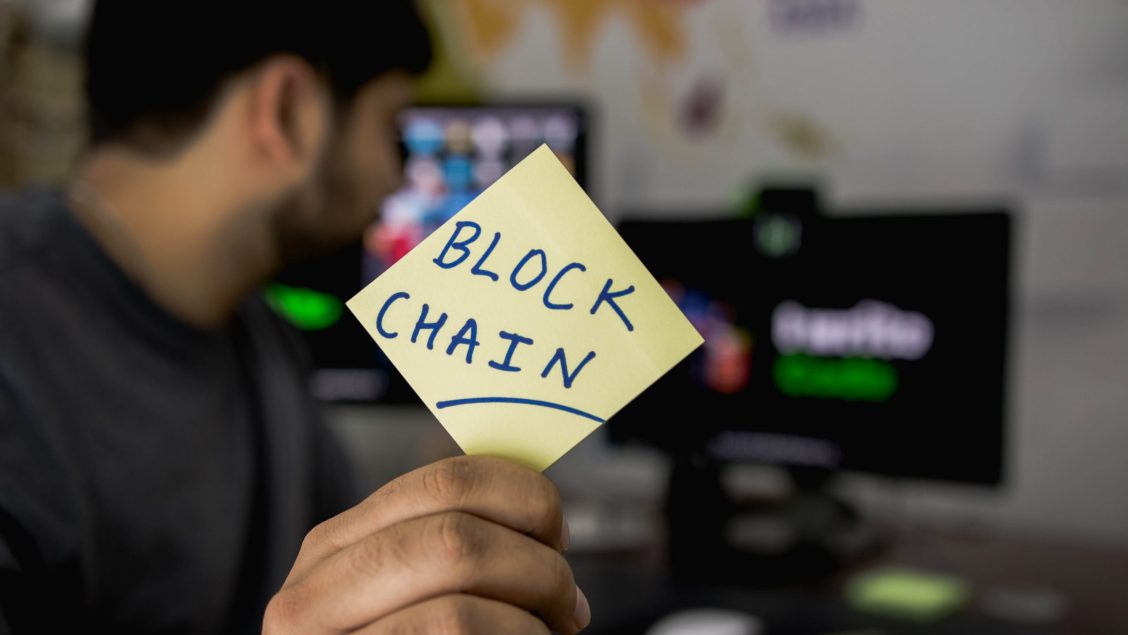
5 Blockchain Applications to Look Out For in 2022
As a fully paid-up member of ‘Gen-Z’ (and one of the first ones I might add), I thought my technological literacy was up to scratch. Then came blockchain, and everyone else seemed to know how it worked and that it would revolutionise the way our computers computed.
So I’ve just been going along with it, as it seems to be important to other pillars of the internet of the future, such as cryptocurrency and the Internet of Things, but it’s 2022 and time to stop winging it. Therefore, I decided to Google it and find out what blockchain is and where to look out for it this year.
If you’re familiar with blockchain, I’ll highlight some of the cutting-edge research going on in the field, and if you’re not, don’t worry, I won’t tell.
What is blockchain?
Blockchain is an unchangeable digital ledger that is shared between the members of a business network. It can be used to record transactions and to track the ownership of or transfer tangible or intangible assets. When an asset is bought, sold, moved or altered in any way, the transaction is recorded as a “block” on the ledger.
Once the block has been created, it is fixed, and is visible to everyone in the network. As the asset moves and changes, the blocks line up, creating a ‘blockchain’ (ta-da!).
Why all the fuss about blockchain?
The advantage of these immutable ledgers is that they eliminate time, money and energy wasted on duplicate record keeping and third-party validation, along with damage from cyberattacks and fraud, as the data related to each asset, stored in the blockchain, are transparent, secure and universally accepted to be accurate. The amount and breadth of the patents in this article demonstrate excitement that these advantages are generating in China alone: Technology Hotspot Tracking: Topic Discovery and Evolution of China’s Blockchain Patents Based on a Dynamic LDA Model offers a brief overview of these hotspots. But why these qualities matter is best explained in real terms, so here are 5 blockchain applications to look out for in 2022.
-
Healthcare
Healthcare services and their ability to react to dangerous, rapidly evolving situations have been tested recently due to COVID-19. Effective and transparent record-keeping, along with secure and prompt access to those records, is crucial to the proper functioning of these systems under stress. This article from the University of Bari, Italy, gives a good introduction to blockchain and a useful example of how it’s being used to combat COVID-19. Having a patient’s record stored on a blockchain allows a doctor, nurse, dentist, physiotherapist or even a first responder to access these records and know that they are accurate before providing relevant care. Much of this is already going on but, in 2022, as we emerge from the pandemic, blockchain will help to ensure that our health systems emerge faster, more efficient and more secure than ever.
Security algorithms and healthcare
But there’s no such thing as a free lunch, and simply implementing a blockchain system isn’t enough to reap the benefits of this technology. These systems must constantly evolve to keep out security threats, which themselves are becoming smarter and smarter. These researchers publishing in Electronics have developed a security algorithm which provides healthcare blockchains with better security and privacy at a lower cost. They’re an international team who use smart contracts and a ‘ring signature’ encryption and decryption method.
They validated their method on multiple systems and with multiple organisations—and it worked! This is just the beginning; the sheer amount of research going on in this area speaks for itself. A search for “blockchain healthcare” publications in 2021 and 2022 alone on the MDPI website returns 62 publications!
-
Supply Chains
Global trade and modern society rely on infinitely complex ‘just-in-time’ supply chains, which is something that many of us didn’t realise until they all broke under pressure from problems caused or exacerbated by COVID-19. Blockchain won’t solve all of these problems; however, it could allow companies to monitor their supply chains and react better when things go wrong.
The traceability and transparency that blockchain provides are crucial for assuring the security of supply chains, allowing stakeholders to know decisively where products have come from and how long they have spent in transit. This is imperative in the agricultural and food industries in particular; this comprehensive review by researchers from the University of Zaragoza explains the advantages of a number of Industry 4.0 technologies for agri-food supply chains.
Blockchain and prefab
As well as tackling the lingering problems of 2020 and 2021, blockchain has the chance to play a starring role in modern supply chains that are more robust to outside influences. The technology is helping to drive the surge in prefabrication methods being used to feed demand for new and affordable homes in New Zealand. Researchers surveyed customers and suppliers to dig into the real impact that blockchain is having for stakeholders, not just its theoretical potential. They found that blockchain helped to “foster collaboration between organisations” by allowing them to enhance their supply chain integration and cut out inefficiency.
-
The Internet of Things
It started with smartphones, then it was smart speakers and smart TVs, and on the horizon loom all sorts of internet-connected devices. These come together to form the ‘Internet of Things’, a network of interconnected smart devices that could transform your kitchen but is also pillar of equipping our factories for the fourth industrial revolution.
Smaller devices for Internet of Things
In the context of smart factories and Industry 4.0, the Internet of Things and blockchain are crucial to allowing manufacturing robots and internet-connected equipment to function effectively and safely. The network on which this equipment runs must process huge amounts of data with reliability and transparency, which trains the spotlight on blockchain as a solution for these networks. However, blockchain solutions are still in their relative infancy and have traditionally been implemented on devices with a large amount of computing power. If blockchain is to be applied to smaller Internet of Things devices in 2022, it must demand less computing power from them. Researchers from Ajou University in Suwon, Korea, are working towards a lightweight blockchain to allow Internet of Things devices to take advantage of the security and transparency offered by the technology.
Blockchain and the home
As the Internet of Things makes its way into our homes, the importance of the security of these networks is paramount. As smart devices become smaller and multiply, the ability of threats to enter networks through weaknesses in security grows. One way to combat these security risks is through anomaly detection, which alerts users to deviations from the network’s normal behaviour. The shared digital ledger offered by blockchain presents a comprehensive record against which to compare anomalous activity and an indisputable record of what occurred. Blockchain and other anomaly detection systems are explained in this Comprehensive Study of Anomaly Detection Schemes in IoT Networks Using Machine Learning Algorithms by researchers in Australia.
-
Cryptocurrency
Like blockchain, cryptocurrency is another of the buzzwords of the newest stage of the internet, and they are intrinsically linked in that blockchain’s ability to provide an indisputable, secure and decentralised record of transactions is central to cryptocurrency. There are various arguments for and against cryptocurrency and its potential to act as sound money which I won’t get into now. Instead, let’s look at the role blockchain plays in cryptocurrency, whether or not it is ‘the future’.
Blockchain and cryptocurrency
Bitcoin, the first and most well-established cryptocurrency created by Satoshi Nakamoto in 2008, represented the first real-world application of blockchain technology and, as Bitcoin grew in popularity (and value) and then fell and then grew again, etc., over the following years, blockchain grew in notoriety itself and has yet to slow down.
The importance of blockchain to cryptocurrency is that it gives it its most crucial quality, independence from any one central authority. Instead, the blockchain itself is the authority, transparently and clearly recording who owns what, and negating the need for this to be done independently. A key example is the recent explosion of non-fungible tokens (NFTs), digital items whose ownership is attested to by smart contracts on a blockchain, and which are often purchased with cryptocurrency. NFTs are a whole digital rabbit hole of their own, and the article The NFT Hype explains what they are and what the ‘hype’ is.
However, the relationship between cryptocurrency and blockchain isn’t entirely symbiotic, as the global and excited reporting of Bitcoin’s financial implications has often overshadowed the potential of blockchain beyond cryptocurrency—the article Going beyond Cryptocurrencies details that effect in Brazil.
-
Voting
As technology exerts its influence on the mechanisms of democracy, it brings with it all the potential problems which we see with new technology in other areas. The important difference when we consider the processes that underpin our systems of government is that the stakes couldn’t be any higher, and problems (or perceived problems) with the systems we use to record or count votes have the potential to cause immeasurable damage.
Looking at the application of blockchain to voting technology, the advantages centre around two qualities intrinsic to blockchain and which I’m sure you can guess by now—immutability and transparency.
Using the Hyperledger Fabric platform, researchers from the University of Coruña, Spain, have developed an E-Voting System intended to give “voters anonymity and trust in the fairness of the election process”. Transparency is possibly of even more importance than security in these cases; we have seen in recent history how accusations of voter fraud can be as damaging as the real thing.
In 2022 and beyond, proper implementation of blockchain technology in voting systems can answer these questions honestly and definitively.
So what does it mean going forward?
I am confident and even excited that we might be able to use blockchain to make these systems ones that work quietly in the background, rather than cause problems which distract us from the more important functions with which they are meant to help. In each of the potential applications of this technology, the transparency and mutually trusted validity which it provides are key qualities that make it so advantageous.
This is what struck me when exploring blockchain. As we look forward into 2022, everything that we build, not just our computer systems, should have transparency and shared trust at its core.










